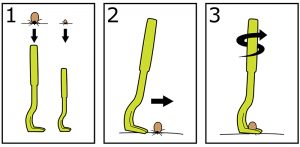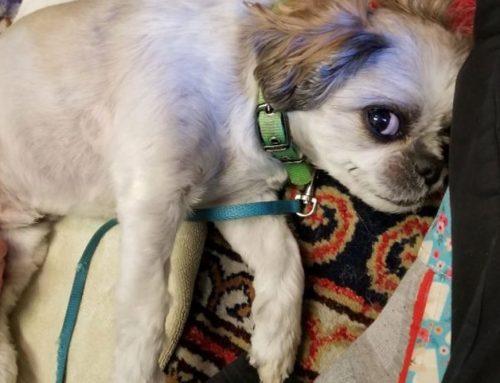 During the warmer months it is inevitable that we will start to see more and more of our patients coming in to see us with ticks that need to be removed.
During the warmer months it is inevitable that we will start to see more and more of our patients coming in to see us with ticks that need to be removed.
As veterinary professionals, we always tell owners that it is important to remove ticks as soon as you see them, whether they are found on yourself or your pet, but why is this? Ticks can be carriers of many different diseases that affect both humans and our furry friends including (but not limited to):
- Lyme Disease
- Anaplasmosis
- Erlichiosis
- Rocky Mountain Spotted Fever
The longer a tick remains attached, the greater the risk for diseases to be transmitted. So, once you find a tick it’s best to have it removed right away!
Preparing the proper tools:
1. Tick Twisters
2. Gloves
3. Storage container for the tick (plastic bag, empty pill vial)
4. Gentle antiseptic cleaner
If possible, have someone assist you with your pet when you are removing the tick. Have your helper use treats as distraction in order to help your pet view this as a positive experience in case you need to do this again in the future.
A step by step guide to tick removal:
- Make sure to put on your gloves!
- Have your assistant give your pet a nice big hug to help keep still during this procedure and feed treats along the way. The less wiggling the easier it will be for you to see what you are doing.
- Part the fur away from the tick for better visualization.
- Choose the most suitable sized tick twister based on the size of the tick.
- Slide the tick twister underneath the tick, slightly lift and twist. The tick will detach itself after 2-3 rotations.
- Once removed, do not dig or pick at your pets skin as this will increase irritation.
- Place the tick in the storage container.
- Use your gentle antiseptic cleaner to clean the area.
- Clean your tick twisters, remove your gloves and wash your hands.
- Give your pet a treat!
- Last but not least, report your tick to the pet tick tracker at Pet Tick Tracker

In order to help catch these creepy crawlers as soon as possible, it is good practice to do an overall check of your pet (and yourself!) after coming in from walks or hikes. It is best to do this in a very positive and fun way by offering belly rubs, and full body massage to check for anything attached. Pay particular attention to the head, belly, and limbs (and in between the toes!) as these are areas that ticks are most commonly found.
Give us a call if you have any questions or are in need of some tick twisters!
-Becky, RVT






Leave A Comment